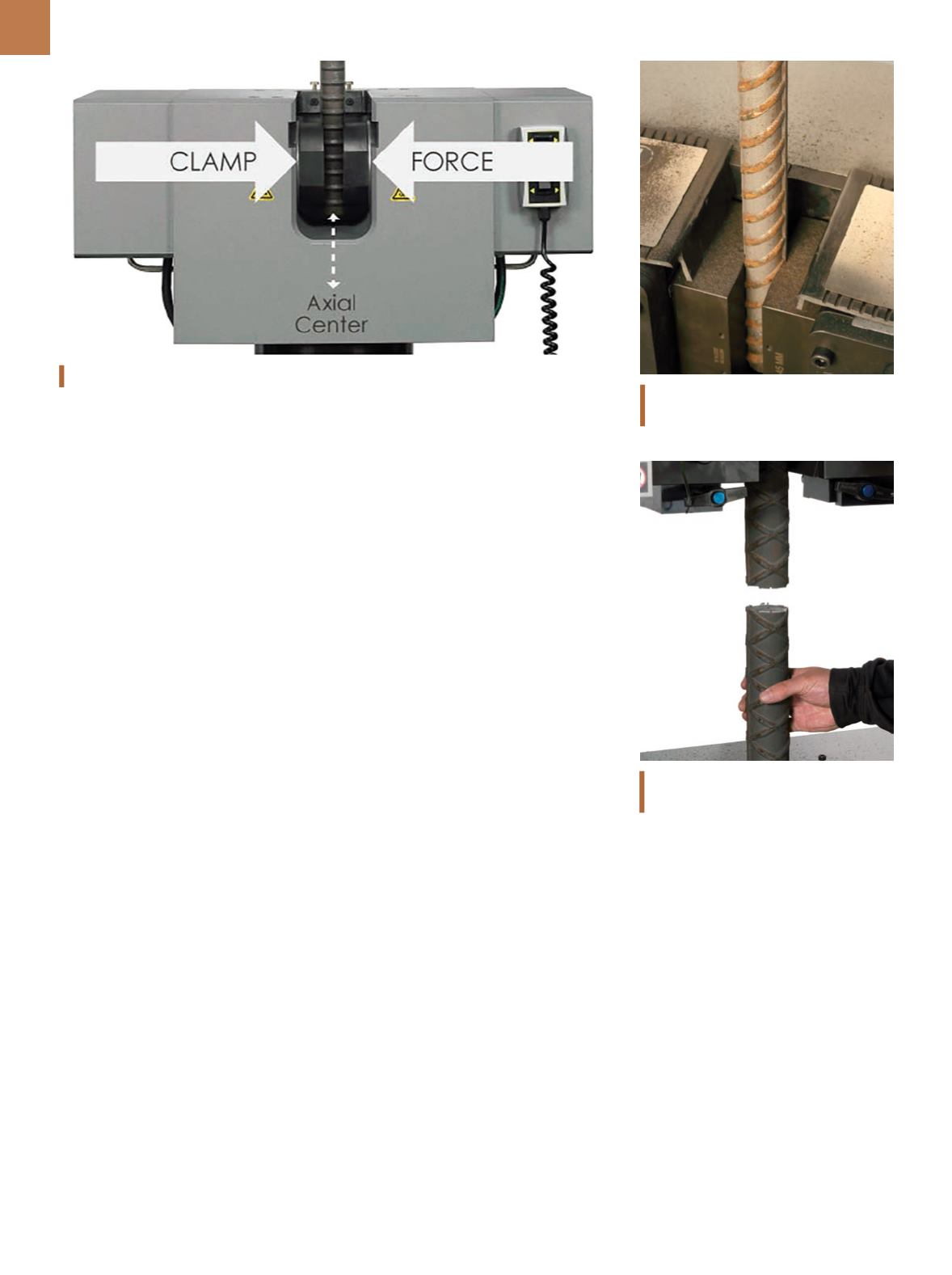

A D V A N C E D M A T E R I A L S & P R O C E S S E S | J U N E 2 0 1 5
2 4
•
Testing procedures or methods
•
Calculations or results to be
determined
Even though standards provide
these details, some aspects may still
be left to interpretation, which can
often lead to variations in testing per-
formance. Additionally, if a lab is test-
ing products to a variety of global or
local standards, it can be challenging
to fully understand and capture sub-
tle differences in terminology and
methodologies.
This article attempts to clarify ar-
eas commonly misinterpreted or mis-
understood by users. The content is
intended to be general and summary in
nature so it can be applied regardless of
which test standard is followed.
EQUIPMENT CONSIDERATIONS
Accommodating bent specimens:
As standards indicate, rebar specimens
must be straightened prior to tensile
testing. As a result, many test piecesmay
still have a slight bend or nonlinearity
over their length. Therefore, load frame
and grips that are able to accommodate
slightly bent specimens are best.
Grips that mechanically clamp
on center are recommended in order
to maintain axial alignment. Hydraulic
side-acting grips are best for addressing
bent specimens because the mechani-
cal balancing (synchronizing) between
the two sides allows them to always
clamp on center even when side loads
from bent specimens act against the
jaws closing. This helps improve align-
ment and eliminates resetting of grips
between tests. Resetting is typically
associated with hydraulically synchro-
nized grip designs that cannot clamp on
center when specimen side loads exist.
Failure to reset these types of grips be-
tween tests can allow misalignment be-
tween upper and lower grips.
Specimen deformations and scal-
ing:
Grip jaws (faces) must accommo-
date deformations and scale common
on rebar specimen surfaces. Scalebuild-
up in the teeth of the jaws can lead to
specimen slippage. Tooth patterns that
are too aggressive can cause premature
specimen failures and may also prevent
the specimen halves from being easily
removed after the test. Therefore, tooth
profiles should allow scale to fall away
naturally or be easily brushed away be-
tween tests. They should also alleviate
failures potentially caused by grips. If
the broken specimen halves remain
stuck in the jaw faces, operators must
dislodge them through use of a ham-
mer or other means, which can reduce
efficiency and add to operator fatigue
and frustration.
The grip’s mechanical functions
should also be protected against falling
scale. If scale is allowed to get between
moving parts, critical surfaces can be
galled and lead to poor performance
or grip failure. Regular removal of scale
from testing equipment is important
to help prevent unnecessary wear and
tear.
Violent specimen failures:
Because
rebar specimens release a lot of stored
energy during tensile failure, the test-
ing system must be able to withstand
the shock that results from specimen
recoil. Grips are most impacted and
must be robust enough to absorb the
energy and still hold the broken spec-
imen halves so they do not eject from
the testing frame. Flying specimen piec-
es could become a safety hazard to the
operator and can also damage equip-
ment. For these reasons, hydraulically
actuated grips (wedge or side-acting)
are recommended.
Extensometers:
Extensometers are
not always required when testing rebar.
Instron DuraSync side-acting grips clamping rebar specimen on center.
Abundant scale accumulation on lower
grip after one test.
Number 18 (57 mm) bar separation
(recoil) after failure.


















